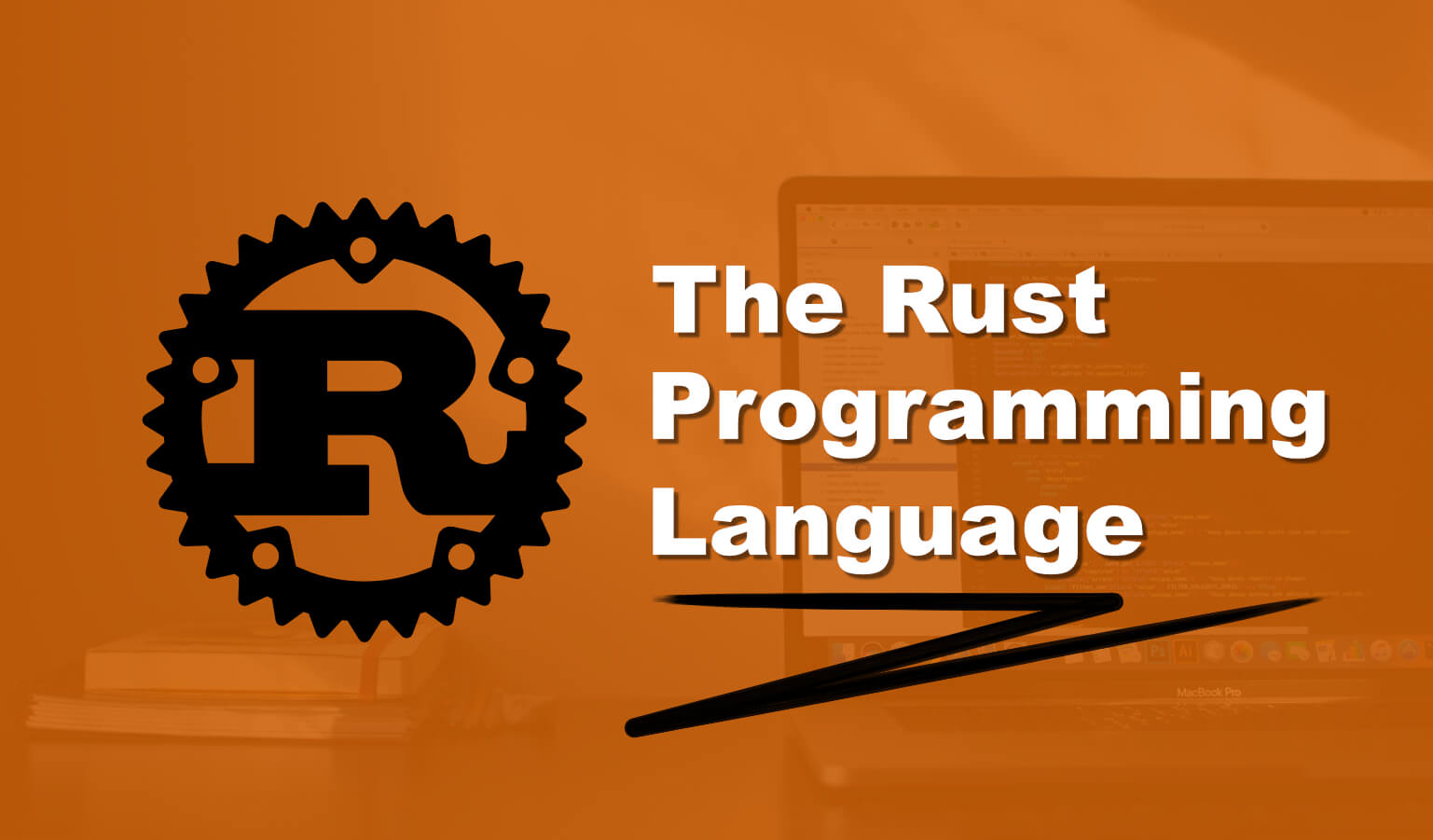Why Rust Is Taking Over System Programming in 2025
Rust is revolutionizing system programming in 2025, standing at the forefront of safety, speed, and future-proofing code. With its adoption soaring among developers and industries, Rust challenges established languages and ushers in a new era of software development, blending high performance with unparalleled memory safety.
The Rise of Rust in Numbers
The explosive growth of Rust in the programming world is not just anecdotal—it’s backed by hard numbers. Over the past five years, Rust has consistently ranked as the most loved language in Stack Overflow’s annual developer surveys, with over 87% of respondents in 2024 expressing a desire to continue using it. But love alone doesn’t drive adoption; commercial adoption does. Companies like Microsoft, Google, and Amazon have publicly embraced Rust for critical infrastructure, with Microsoft reporting a 70% reduction in memory-related vulnerabilities after migrating parts of Windows to Rust.
The data from GitHub’s State of the Octoverse reveals Rust’s repository count grew by 300% between 2020 and 2025, outpacing even Python and Go in system programming niches. The Rust Foundation’s 2024 report highlighted that active contributors to open-source Rust projects surpassed 250,000—a staggering figure for a language once considered niche. Enterprises aren’t just experimenting; they’re committing. Cloudflare, for instance, rewrote core network components in Rust, citing a 40% performance boost over C++ with zero memory safety incidents in production.
Developer onboarding is accelerating, too. The number of Rust-related job postings on LinkedIn tripled from 2022 to 2025, with salaries for Rust engineers 15-20% higher than those for comparable C++ roles. Educational platforms like Coursera and Udemy saw Rust course enrollments double year-over-year, reflecting a shift in developer priorities toward safer, high-performance languages.
The rise isn’t just technical—it’s cultural. Communities like RustBridge and This Week in Rust have fostered inclusivity, making Rust one of the fastest-growing languages among underrepresented groups in tech. With metrics like these, Rust isn’t just competing in system programming—it’s redefining it.
Memory Safety Without Performance Sacrifice
Rust’s rise in system programming isn’t just about popularity—it’s about solving a fundamental problem that has plagued developers for decades: how to achieve memory safety without sacrificing performance. Traditional languages like C and C++ offer raw speed but leave developers vulnerable to memory-related bugs—dangling pointers, buffer overflows, and data races—that can lead to crashes or security vulnerabilities. Rust’s revolutionary approach eliminates these risks through its ownership model, a compile-time enforcement mechanism that ensures memory safety without runtime overhead.
At the core of Rust’s design is the principle that each piece of memory has a single owner, and the compiler statically verifies that references to that memory adhere to strict borrowing rules. This prevents multiple threads or functions from mutating the same data unsafely, effectively eradicating entire classes of bugs. Unlike garbage-collected languages, Rust doesn’t rely on runtime checks, meaning there’s no performance penalty—code runs as fast as hand-optimized C, but with far fewer vulnerabilities.
The ownership model is complemented by Rust’s lifetimes, which track how long references to data remain valid. This eliminates dangling pointers by ensuring references can’t outlive the data they point to. Combined with Rust’s zero-cost abstractions, these features allow developers to write high-level, expressive code that compiles down to machine code as efficient as manual memory management.
Industries requiring both speed and reliability—like embedded systems, game engines, and cloud infrastructure—are adopting Rust precisely because it delivers on this promise. By enforcing safety at compile time rather than runtime, Rust redefines what’s possible in system programming, setting the stage for a future where crashes and vulnerabilities are exceptions, not norms.
Performance Characteristics
Rust’s performance characteristics are a cornerstone of its rise in system programming, rivaling even the most optimized C and C++ code. Unlike many modern languages that trade speed for convenience, Rust achieves zero-cost abstractions, meaning high-level constructs compile down to machine code as efficiently as hand-written low-level implementations. This makes Rust ideal for critical infrastructure, where microseconds matter—cloud platforms, operating systems, and embedded systems all benefit from Rust’s raw speed and predictability.
One key factor behind Rust’s performance is its lack of a runtime. Unlike languages with garbage collection or just-in-time compilation, Rust compiles directly to native code, eliminating overhead. Its fine-grained control over memory layout ensures cache-friendly data structures, crucial for latency-sensitive applications. Additionally, Rust’s fearless concurrency model allows developers to write parallel code without data races, leveraging modern multi-core processors efficiently.
Rust’s compiler optimizations further enhance performance. The LLVM backend aggressively optimizes Rust code, often matching or surpassing equivalent C implementations. Features like inlining, loop unrolling, and dead code elimination ensure minimal bloat. Meanwhile, Rust’s explicit aliasing rules enable the compiler to make stronger assumptions, unlocking optimizations that would be unsafe in C or C++.
The language’s suitability for critical systems is evident in its adoption by major tech players. Cloud providers use Rust for high-performance networking stacks, while operating systems like Linux integrate Rust for driver development. Even in resource-constrained environments, Rust’s deterministic performance makes it a top choice. By combining speed with safety—as discussed in the previous chapter—Rust doesn’t just compete with legacy languages; it redefines what’s possible in system programming.
As the next chapter will explore, Rust’s growing ecosystem amplifies these advantages, providing the tools and libraries needed to build complex systems efficiently.
Growing Ecosystem and Community Support
Rust’s meteoric rise in system programming isn’t just due to its performance—its thriving ecosystem and community support have been equally transformative. At the heart of this ecosystem is Cargo, Rust’s built-in package manager and build system. Cargo streamlines dependency management, compilation, and testing, eliminating much of the friction found in traditional systems like Make or CMake. Combined with crates.io, Rust’s centralized package registry, developers gain seamless access to thousands of libraries, fostering rapid development without sacrificing reliability.
The Rust community has cultivated a culture of collaboration and open-source innovation. From foundational libraries like tokio for async runtime to serde for serialization, the ecosystem is rich with high-quality, production-ready crates. Unlike fragmented C/C++ ecosystems, Rust’s standardized tooling ensures consistency across projects, reducing integration headaches. Enterprises and hobbyists alike benefit from this maturity, as evidenced by adoption in projects like Linux kernels, WebAssembly toolchains, and blockchain infrastructure.
Beyond tooling, Rust’s community actively drives language evolution through RFCs (Request for Comments) and working groups. This inclusive approach ensures that features like async/await or const generics are refined with real-world use cases in mind. The community’s emphasis on mentorship—through initiatives like RustBridge and This Week in Rust—accelerates onboarding, making Rust accessible even to those new to systems programming.
As Rust’s ecosystem continues expanding, its ability to support complex, mission-critical applications solidifies its dominance. The next chapter will contrast Rust’s low-level strengths with Go’s cloud-native simplicity, but here, it’s clear: Rust’s tooling and community are unmatched in fostering safe, high-performance development at scale.
Rust vs. Go in 2025
In the rapidly evolving landscape of system programming, Rust and Go have emerged as two dominant languages, each carving out distinct niches by 2025. While Go has solidified its position as the go-to language for cloud-native development, Rust has gained unparalleled traction in low-level, performance-critical applications. The comparison between these languages reveals stark differences in design philosophy, performance, and suitability for specific use cases.
Rust’s zero-cost abstractions and memory safety guarantees make it ideal for building operating systems, embedded systems, and high-performance networking tools. Its compile-time ownership model eliminates entire classes of bugs, such as data races and null pointer dereferences, without sacrificing speed. This makes Rust a natural successor to C and C++ in domains where safety and performance are non-negotiable. Meanwhile, Go’s simplicity and built-in concurrency model (goroutines) excel in scalable backend services and microservices, where developer productivity and rapid iteration are prioritized over fine-grained control.
However, Go’s garbage collector, while convenient, introduces unpredictable latency, making it less suitable for real-time systems. Rust’s deterministic memory management, on the other hand, ensures predictable performance—a critical requirement for system-level programming. Additionally, Rust’s growing ecosystem, as discussed in the previous chapter, has narrowed the gap in tooling and libraries, further cementing its dominance in performance-sensitive domains.
Yet, Go remains the preferred choice for teams focused on cloud infrastructure, thanks to its straightforward syntax and shorter learning curve. While Rust demands a deeper understanding of its ownership system, the payoff is unparalleled control over system resources. As we’ll explore in the next chapter, this trade-off between complexity and capability remains a key adoption hurdle for Rust, even as its advantages become increasingly undeniable.
Challenges and Adoption Hurdles
While Rust’s advantages in system programming are undeniable, its adoption comes with significant challenges, particularly for developers transitioning from languages like C++ or Go. The steep learning curve, primarily driven by Rust’s ownership model and borrowing rules, often acts as a barrier. Unlike garbage-collected languages or those with manual memory management, Rust enforces strict compile-time checks to ensure memory safety without runtime overhead. For developers accustomed to more permissive paradigms, this shift can feel restrictive and frustrating at first.
Common pain points include:
- Understanding lifetimes: Annotations like ‘a can be cryptic, and errors related to them often require deep dives into Rust’s ownership semantics.
- Fighting the borrow checker: Newcomers frequently struggle with mutable and immutable borrows, leading to compile-time errors that feel punitive until the concepts click.
- Tooling and ecosystem maturity: While Rust’s tooling is robust, some niche domains still lack mature libraries, forcing developers to write low-level code themselves.
Despite these hurdles, the developer community has rallied to ease the transition. Resources like The Rust Book, interactive platforms (e.g., Rustlings), and mentorship programs have proven invaluable. Many teams report that the initial investment pays off, as Rust’s compiler acts as a “strict teacher” that ultimately reduces debugging time and runtime crashes. Companies like Microsoft and Amazon have shared case studies where Rust’s safety guarantees outweighed early productivity dips, especially in critical infrastructure.
The key to overcoming these challenges lies in patience and practice. As Rust’s ecosystem matures and educational resources expand, the adoption curve will likely flatten, paving the way for its dominance in system programming—a theme we’ll explore further in the next chapter.
The Future of System Programming
As Rust solidifies its position in system programming by 2025, its influence extends beyond overcoming adoption hurdles—it is actively reshaping the future of the field. The language’s core philosophy of safe, concurrent, and fast code is not just a technical achievement but a paradigm shift, redefining how foundational software is built. By eliminating entire classes of memory-related bugs and enabling fearless concurrency, Rust is setting a new benchmark for reliability in low-level development.
One of Rust’s most transformative contributions is its ability to democratize system programming. Traditionally, writing performant and secure systems software required deep expertise in C or C++, along with meticulous attention to manual memory management. Rust’s ownership model and borrow checker automate these complexities, making high-performance coding more accessible without sacrificing control. This lowers the barrier for developers to contribute to critical infrastructure, from operating systems to embedded devices, while maintaining rigorous safety guarantees.
The language’s innovative features, such as zero-cost abstractions and fearless concurrency, are pushing the boundaries of what’s possible. Projects like WebAssembly and blockchain runtimes leverage Rust to achieve near-native performance with robust security. Meanwhile, its growing ecosystem—powered by Cargo and crates.io—fosters collaboration, accelerating the development of reusable, production-grade libraries.
Looking ahead, Rust’s influence will likely expand into emerging domains like real-time systems, quantum computing interfaces, and secure IoT frameworks. Its emphasis on correctness and performance aligns perfectly with the demands of next-generation technology. As more industries recognize Rust’s potential, it will not only dominate system programming but also inspire a new wave of innovation, proving that safety and speed are not mutually exclusive but foundational to the future of code.
Impact on Industry and Infrastructure
The adoption of Rust in industry and infrastructure has been transformative, with its safety and performance features proving indispensable across diverse sectors. In cloud computing, companies like Microsoft and Amazon have integrated Rust into critical components of their infrastructure. Microsoft’s Azure team, for instance, leveraged Rust to rewrite parts of its global-scale distributed systems, reducing memory-related bugs by over 70% while maintaining high throughput. Similarly, AWS uses Rust in services like Lambda and S3, where its zero-cost abstractions ensure low-latency performance without compromising security.
In embedded systems, Rust’s memory safety has made it a favorite for IoT and automotive applications. Tesla adopted Rust for firmware in its electric vehicles, where reliability is non-negotiable. The language’s ability to prevent data races and null pointer dereferences has minimized vulnerabilities in safety-critical systems. Meanwhile, in networking, Cloudflare replaced C++ with Rust in its edge servers, achieving a 40% reduction in CPU usage while handling millions of requests per second.
The blockchain industry has also embraced Rust, with projects like Solana and Polkadot building their entire ecosystems on it. Solana’s high-performance blockchain relies on Rust’s concurrency model to process thousands of transactions per second securely. Even governments are taking notice—the U.S. Department of Defense now mandates Rust for certain cybersecurity projects due to its resilience against exploits.
From web browsers (Firefox’s Servo engine) to operating systems (Google’s Fuchsia), Rust’s versatility is reshaping how foundational software is built. Its impact isn’t just technical—it’s cultural, pushing industries to prioritize safety without sacrificing speed. As more organizations witness these successes, Rust’s dominance in system programming becomes inevitable.
Educational Initiatives and Resources
The rise of Rust in system programming isn’t just a result of its technical merits—it’s also fueled by a robust ecosystem of educational initiatives and resources designed to make the language accessible to newcomers. The Rust community has prioritized lowering the barrier to entry, recognizing that widespread adoption hinges on empowering developers with the knowledge and tools to succeed.
One of the most impactful efforts is the Rust Book, an open-source, community-driven guide that serves as the definitive introduction to the language. Its clear explanations, hands-on examples, and iterative approach demystify Rust’s more complex concepts, such as ownership and borrowing. Complementing this are platforms like Rustlings, which offer small, interactive exercises to reinforce learning through practice.
Educational institutions have also embraced Rust, integrating it into curricula as a modern alternative to C and C++. Universities like MIT and Stanford now offer courses focused on systems programming with Rust, exposing students to memory-safe practices early in their careers. Online learning platforms, such as Coursera and Udemy, host specialized Rust courses, making the language accessible to self-taught developers worldwide.
Community-led initiatives further accelerate adoption. RustBridge, for example, targets underrepresented groups in tech, providing free workshops and mentorship to diversify the Rust ecosystem. Meanwhile, global events like RustConf and local meetups foster collaboration, offering spaces for developers to share knowledge and troubleshoot challenges.
Documentation remains a cornerstone of Rust’s educational strategy. The language’s official docs, alongside third-party resources like Learn Rust the Hard Way, ensure developers have multiple pathways to mastery. By investing in education, the Rust community isn’t just spreading adoption—it’s cultivating a generation of developers equipped to build safer, faster systems from the ground up.
Looking Ahead: Rust and the Next Generation of Developers
The rise of Rust isn’t just reshaping system programming—it’s also molding the next generation of developers. As emerging programmers encounter Rust’s unique blend of safety, performance, and expressive syntax, they’re being conditioned to prioritize robust, maintainable code from the outset. Unlike legacy languages where bad habits can proliferate, Rust’s compiler enforces discipline, teaching developers to think critically about memory management, concurrency, and error handling before their code even runs. This shift is fostering a cohort of engineers who inherently value correctness over quick fixes.
The language’s community-centered ethos further amplifies this effect. Rust’s welcoming culture, transparent governance, and emphasis on mentorship create an environment where newcomers feel empowered to contribute. Open-source projects like tokio and serde serve as both learning tools and collaborative hubs, allowing novices to engage with production-grade code early in their careers. Meanwhile, initiatives like RustBridge and inclusive conference policies ensure diverse voices shape the ecosystem—a stark contrast to the gatekeeping often seen in older languages.
Looking ahead, Rust’s influence will extend beyond its own adoption. Developers raised on Rust will carry its principles into other domains, pushing for stronger type systems, fearless concurrency, and safer defaults elsewhere. As these programmers ascend into leadership roles, they’ll champion architectural patterns that minimize technical debt—effectively raising the bar for software quality industry-wide. The future of coding isn’t just about Rust replacing C++; it’s about Rust’s philosophy redefining what developers expect from all tools they use.

Conclusions
In 2025, Rust has reshaped system programming, offering a compelling combination of safety and performance. Its growth signals a shift in developer priorities towards secure, efficient code. As Rust continues to evolve, its role in setting new standards for system programming is undisputed, marking a pivotal moment in the development of foundational software.



